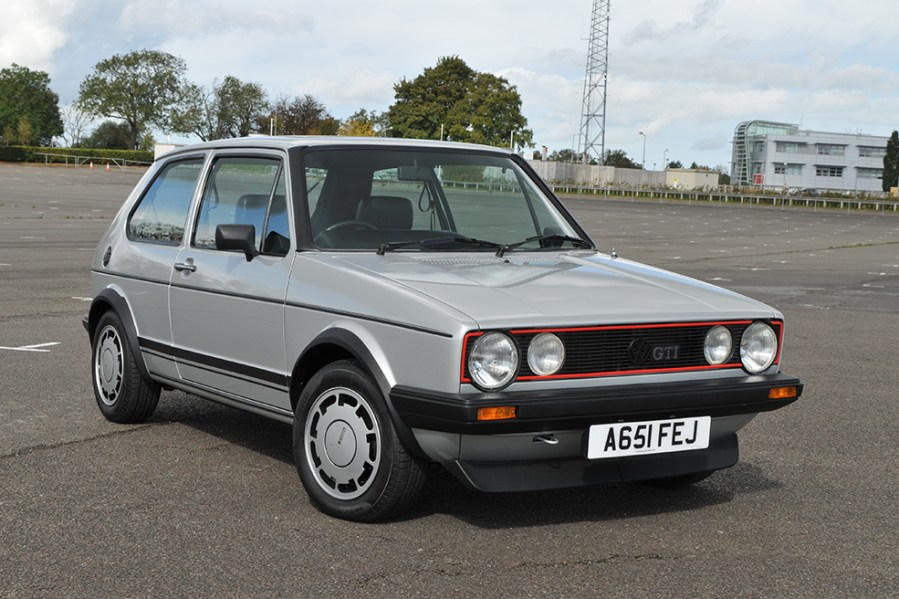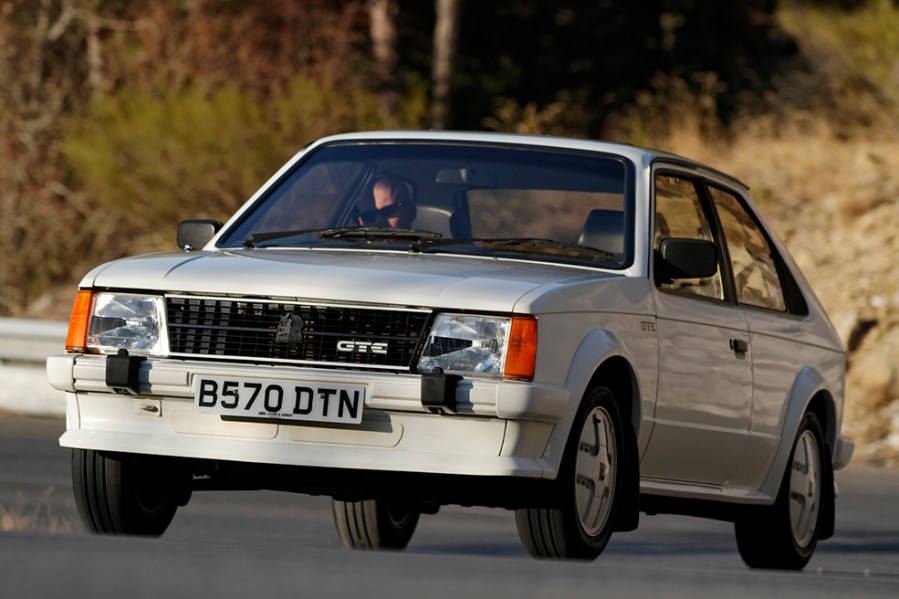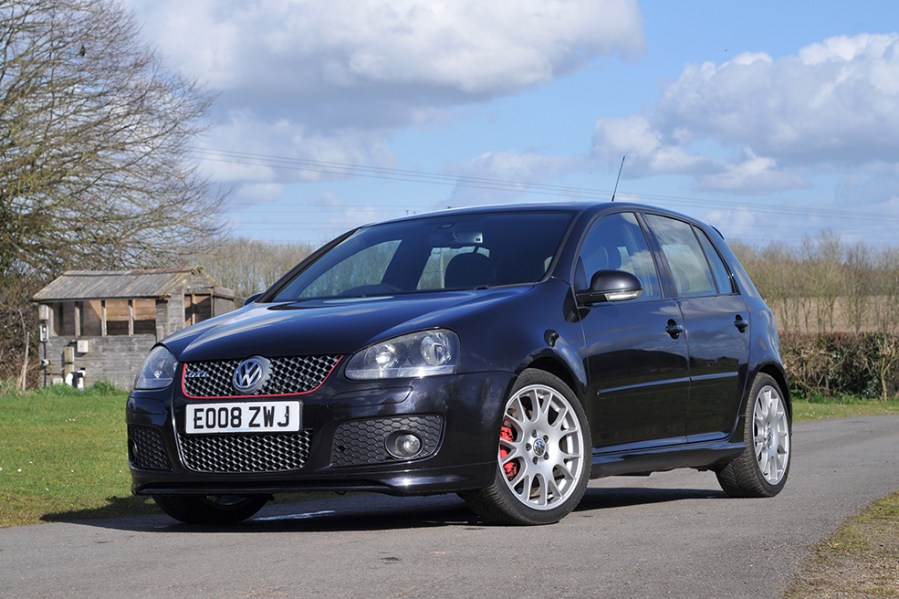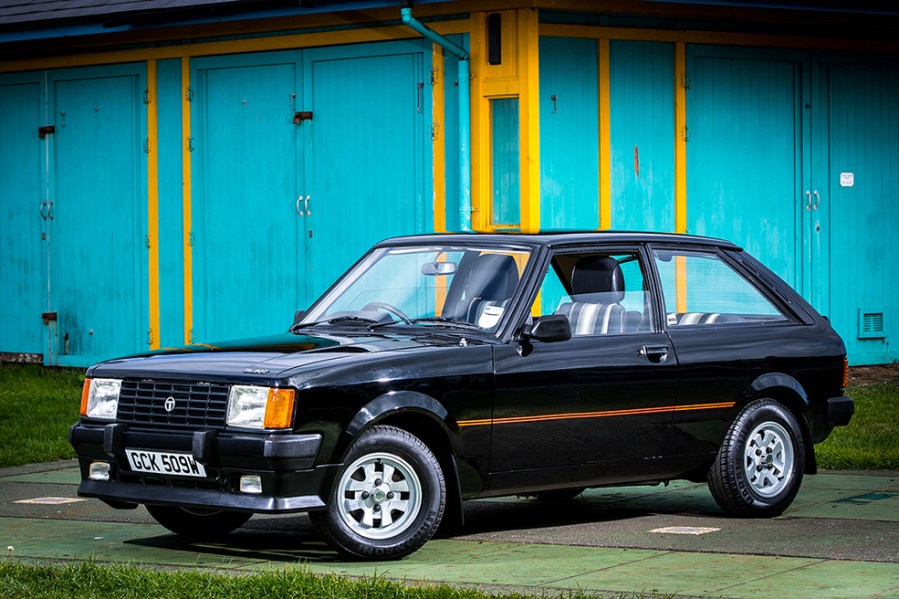If you want something quick, interesting and useful, there is only really one suitable class of car: the hot hatch. Here are our favourites
Words: Sam Skelton
The hot hatch is a phenomenon whose evolution over the years is interesting to chart. Starting in the 1970s with what amounted to sports cars in hatchback shells, the genre was tamed in the otherwise excessive 1980s and slowly returned to its roots through the 1990s and 2000s. A modern Volkswagen Golf R owes more to the Talbot Sunbeam Lotus in concept than to the Mk1 Golf GTI, for instance – a true alternative to an open-top sports car but with space for the family.
That variety over the course of the hot hatch’s near 50-year lifespan means there’s something for almost anyone who wants to take the plunge. Here are our favourites.
Talbot Sunbeam Ti & Lotus
The Talbot Sunbeam had a bit of an image problem in the 1970s. Developed largely as a Hillman Imp replacement and using mechanical components draw from the Hilman Avenger range, it was a small, square hatchback with an ageing clientele. Keen to appear more blue language than blue rinse, Chrysler UK set about developing a fast version, the first iteration of which was the Chrysler Sunbeam Ti. With a mechanical spec based on that of the Hillman Avenger Tiger model, its Weber-equipped 1.6 was good for 100bhp and its sporting appearance and light weight made it popular with reviewers and enthusiasts. Rear-wheel drive helped in a market dominated by front-wheel drive; it seemed an enthusiastis’ choice.
The rally variant developed by Lotus and using that marque’s slant-four 907 engine (redesignated Type 911) only boosted that image. 150bhp and 150lb ft of torque in a road car was impressive stuff for the late 1970s, giving the little hatchback big Rover levels of power and performance figures to match its impressive power to weight ratio. Even today, 60mph in 6.6 seconds is quick – this was a car developed over forty years ago. Unsurprisingly, despite the £7000 asking price, Chrysler and later Talbot had no difficulty shifting them. And today – if you can find one – they command serious money.
Vauxhall Chevette HS & HSR
The only hot hatch to get close to the Sunbeam Lotus in terms of performance was the only other example to gain a reputation in the late 1970s; an era in which the sports car was still just about king. The Vauxhall Chevette HS used – at its core – a very similar engine to that in the Sunbeam, but this slant-four had stayed within Vauxhall’s walls rather than being shipped to Lotus for further development.
Producing 135bhp from 2.3 litres it wasn’t quite as powerful, but then its main competition at launch was the Escort RS2000. It was a rally-focused machine and the 300 or so examples built were all finished in silver with red striping, a Getrag five speed box and tartan trim. The power boost over a standard Vauxhall slant came courtesy of a 16 valve head and twin carburettors, while at the back there was a stronger axle from the Opel Kadett GT/E and the brakes were upgraded to boot. With 60 coming up in around 9 seconds it was quick enough to compete with the Escort but the limited-run HSR, or which fewer than fifty were built, took things to the next level.
150bhp was now available, along with bodykit revisions, rear disc brakes, new rear suspension mountings and a twin plate clutch. There were GRP wings, bonnet and hatchback to reduce weight, and other minor changes. With fewer than 50 HSes left, Vauxhall modified all remaining stock and offered the same modifications to existing customer vehicles to meet the required homologation figure. Today most HSRs have been modified for track or rally stage competition, with just a handful of road cars remaining.

Volkswagen Golf GTI Mk1 & Mk2
While it certainly wasn’t the first hot hatchback, the Volkswagen Golf GTI popularised the breed and took it away from the realms of the homologation special. The GTI began as a skunkworks project, leading into a limited series, then a full production model, and then finally right hand drive for the British market.
Essentially, a Golf GTI was a Volkswagen Golf with the 110bhp 1.6 litre engine taken from the forthcoming Audi 80GTE project. The first prototype had been built around a Scirocco, and the model was given approval in 1975. Just 5000 were to be built initially, but demand was so great it joined the regular production range – including the now well-known golf ball gearknob, red stripe around the grille and plaid upholstery. For 1982 the engine became 1.8 litres, while the MKII Golf of 1983 built upon the earlier car with a larger and more refined bodyshell.
From 1986 a 16 valve variant was offered now offering 137bhp – available with both three and five doors, this is arguably the best of the early hot Golfs even if the Mk1 is more valuable today. Best value If you want to run one daily is an 8v MKII 5 door, but that’s also because it’s the least desirable. If the hatchback isn’t vital (Though that does defeat the object of a hot hatch) the Jetta GTi offers the same benefits with three box sensibility.

Vauxhall Astra GTE
Vauxhall’s first Astra GTE was a hit. Based on the MK1, it was one of the latest of the first cadre of hot hatches. And the MK2 of 1984 built upon it – starting with a 1.8 litre 115bhp engine, in 2987 it grew to a 2.0 130bhp unit shared with the Cavalier SRi130 -and two years later a 150bhp 16 valve model was offered. All were sold only in three door form, though Belmont SRi and LXi estate models offered more bootspace with the same engine as the earliest iteration.
The 16v version of the red-top had been developed by Cosworth, offering a hot hatchback from the company some three years ahead of the rally-derived Escort Cosworth model. With 60 in just 7 seconds, nothing this side of a Maestro Turbo could keep pace in a straight line. When finished in white with white wheels and digital dashboard, few cars spoke of the 1980s more strongly than the Astra GTE MK2, and values – while not as high as the Ford equivalent – have jumped over the last ten years as a result.
Best value of the GTEs today is the early 1.8, though with 115bhp in a small shell it’s still powerful enough to prompt some entertaining grins. And while it’s the best value it’s also the most tractable – the 16v models in particular had too much power for the chassis and offered poor grip and traction in the dry let alone the wet.
Peugeot 205 GTi
The only hot hatch that the motoring press felt could wrest the crown from the Golf in the 1980s was the Peugeot 205 GTi. It was effectively a fuel injected version of the XS – itself a three-door version of the five-door GT. The earliest cars had a 104bhp 1.6 litre version of the XU engine, upgraded for 1987 to 115bhp. 1986 would see the launch of the 130bhp 1.9GTi, using the same engine as the larger 309GTi but in the 205’s compact shell. This was the car that really lit the blue touch paper for Peugeot; a tiny, lightweight car with Peugeot’s class-leading handling characteristics, twinned with a healthy amount of power. Unsurprisingly young men flocked to the car, equally unsurprisingly several were written off, and – this won’t be a shock – insurance premiums went through the roof. The 1.6 was discontinued for 1992 amid emissions issues, while the 1.9 was fitted with a catalytic converter. Power dropped down to 120bhp, but it was enough to keep the car in production for a couple more years.
Better value today are the CTi convertibles, only available with the 1.6 litre engine, but the one collectors crave is the 1.9GTi. Another good value alternative, if you can live with the detuned engine and automatic transmission, is the Gentry. Effectively a 205 1.9 automatic with leather and metallic paint, these are valuable in their own right but still great value when compared with the £25,000 the best GTis can now fetch.

Volkswagen Golf VR6
After the roaring success of the Peugeot 205, Volkswagen had to up its game in the mid 1990s. After all, the Golf GTi was barely any faster in Mk3 guise than a Toyota Corolla. But Volkswagen had developed a new V6 engine for its third generation Passat and its Corrado coupe. The new engine – the VR6 – was a narrow angle V of just 15 degrees, and was designed to enable the casting of a single cylinder block to house both banks. This meant that for transverse applications, packaging could theoretically be easier in a bay designed for a straight four.
174bhp meant 60 in under 7.5 seconds from the new car, albeit with more weight over the nose than a traditional hot hatch. It was enough to put Volkswagen back in front until the next wave of hot hatched – cars like the Peugeot 306 GTi6 – could counter it with similar power and less weight. But it was the first conscious move of the hot hatchback back to the homologation style specials of the 1970s with excessive engine capacity and power for their size – and was arguably the car that sparked the creation of more modern super-hatches such as the Golf R. The VR6 led to the later Golf 4Motion, based on the MKIV, and then to the more extreme R32 model.

Citroen Saxo VTS
Peugeot and Citroen has the hot hatchback market all but sewn up in the 1990s. Those wowed by the Peugeot 205GTi remained loyal, as did warm hatch enthusiasts keen to follow on from the AX GT. And Citroen could accommodate – Rally variants of the 106 and 306 for the warm hatch brigade and full GTis for those who wanted the 205 GTi’s spiritual successor. But the 106 GTi had a sister car, which offered marginally better acceleration through gearing differences, a far more exciting bodykit, and better value when new. It should come as no surprise then that those seeking to relive a misspent youth are flocking instead to the Citroen Saxo VTS.
Under the skin, it was pretty much the same as the 106 GTi, but the bodykit made it the perfect starting point for the Max Power generation – the 1.6 litre TU engine offering not only enough poke to be amusing, but also to carry the weight of the inevitable excessive bodykit. Today, clean and unmolested examples are rare and values are rising sharply – if you don’t want to miss the boat like so many did with the 205, now is the time to buy. Pre facelift cars are rare but more desirable, the later facelift offers better value.

Honda Civic Type R (EP3)
In 2001, Peugeot replaced the 306 with the 307. This left a gap at the top of the hot hatchback tree – a gap formerly filled with the Peugeot 306 GTi6. But Honda was ready to fill it, with the second iteration of its Civic Type R – based on the EP3 Civic. Built in Swindon, the Type R was based on the three door Civic shell. With 200bhp, its 2.0 VTEC engine had enough poke for almost any enthusiast even before modifications, and with a seam welded shell, upgraded 6 speed box and brakes, it was able to handle the power. The car was launched in Europe ahead of any Japanese Type R variant, although one would inevitable follow complete with helical LSD, Recaro seats, and an additional 15bhp. Despite being a Japanese brand, this Honda would once again be built in Swindon but shipped to Japan for local consumption. Underneath, the settings were more track focused – making JDM parts desirable among elements of the British Honda tuning community.
In 2007, the EP3 Type R was replaced by a new model, based on the new FN2 Civic. This was equally well-loved among the fast car community, though revisions to the Volkswagen Golf meant it saw stiffer competition than the EP3.

MINI Cooper S
The MINI Cooper S wasn’t the first supercharged hatchback – the VW Polo G40 came over a decade earlier. But it was the one which caught the public’s imagination – aggressive, with its bonnet nostril, and based on one of the most desirable new shapes around. With 163bhp to play with from its 1.6 litre engine, it was also usefully quick – 60 in 7.2 seconds was nothing to sniff at with small hatched in the early 2000s, and subsequent models would be even quicker still. Bolstering the retro appeal was an exposed fuel filler cap, and most came with contrasting roofs and wheels to boot.
Launched in 2002, it became an instant hit – and twenty years on there is already a register dedicated to the survival of the earliest “02” registered examples, run by the same people as the Y-register for standard Miis. The R53 was replaced by the R56-based Cooper S in 2006 – better value than the original today but far less collectible, and far less historically important.

Volkswagen Golf GTI & R (Mk5)
By 2004 the Volkswagen Golf GTI was moribund. Available with a 2.0 or 1.8T engine in MKIV form, the 2.0 in particular could be outdragged by diesel Rovers and the GTi name was starting to become a joke.
Not so the MK5. The red stripe round the grille had made a return – the first sign that this was a car that meant business. Inside were more nods to the MK1 – a golf-ball gearknob and tartan trim. And under the bonnet was a direct injection four cylinder turbo developing 197bhp, with a choice of six speed manual or DSG transmission. Launched as a three door, certain markets would also receive five door versions of this – the hot Golf’s renaissance album.
And Volkswagen would only develop the theme further – the R32’s six cylinder replacement, the Golf R, would in time also be downsized to a 2.0 four cylinder, but with 266bhp at its 2009 launch. To put that into context, the Subaru Impreza WRX just eight years earlier had had 261bhp. And like the Subaru, the Golf R also featured al wheel drive – a Haldex system marketed by VW as 4Motion. It may be popular now – but that’s for a reason; the Golf R is a seriously hot hot hatch.






